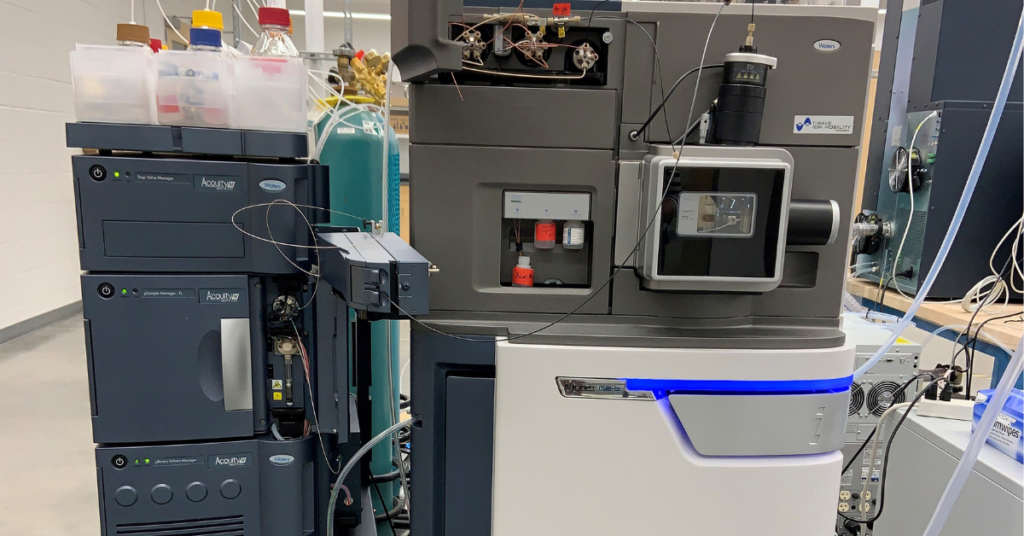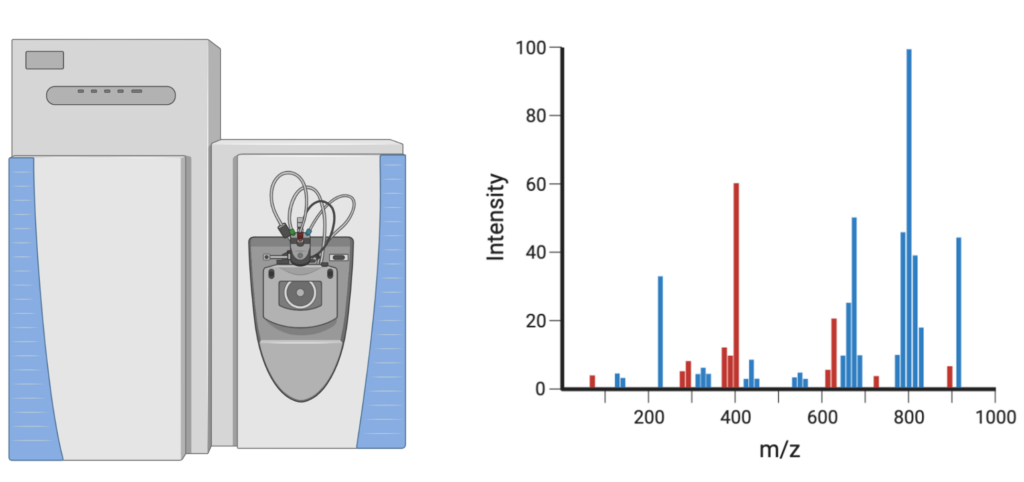
Mass spectrometry, also known as “mass spec”, is a very useful analytical tool that is often used in science to determine the masses of different compounds in a sample.
Mass spec has a variety of applications but frequently in biological sciences. It is used to determine the identity and abundance of proteins in a sample of interest. Proteins carry out all the essential functions of cells, so having information about what proteins are where and how much of each protein is present is very valuable to scientists. The use of mass spec to study proteins in this manner is called proteomics.
How does it work?
Mass spec works on the basis of mass-to-charge ratio. Proteins come in all different shapes and sizes and are made from different combinations of amino acids. The mass spec takes proteins, breaks them up into smaller fragments and ionizes these fragments. This ionization causes the molecules to have a charge, so they are referred to as ions.
The ions are then forced through the spectrometer, which separates them based on their mass and charge. Then the mass-to-charge ratio is calculated. In the end, the spectrometer gives you a graph called a spectra. A spectra gives you information about what ions are present, and how abundant the ion is in the sample. This data is then analyzed to provide information about the proteins in the sample of interest and to compare this information between different samples.

Cartoon of a mass spectrometer and example of a mass spectra. Image created by Eder Xhako using Biorender.com.
How do scientists use mass spectrometry in an experiment?
This is a very useful tool in science because you can see how the proteins change in different conditions.
For example, you can compare the proteins in a wildtype mouse to a mouse model for ataxia. You can also use a mass spectrometer to see what proteins are interacting with a protein of interest. This can give valuable information about how the ataxia mutation leads to changes in protein interactions. Further, it can give insight into how these differences in protein interactions lead to ataxia symptoms.
Mass spectrometry has allowed scientists to learn a lot about the composition, structure, and interactions of proteins. This has led to many scientific advances in our understanding of what causes disease symptoms in ataxias and other disorders.
If you would like to learn more about mass spectrometry, take a look at these resources by Khan Academy and the American Society for Mass Spectrometry.
Snapshot Written by:Eder Xhako
Edited by: Dr. Hannah Shorrock
Read Other SCAsource Snapshot Articles

Snapshot: What is Electromyography (EMG)?
Electromyography, or EMG, is a technique for measuring the electrical activity of skeletal muscles—the muscles that connect to bones and support movement. When our muscles contract, the tissue produces tiny Read More…

Snapshot: O que é Distonia?
Distonia é uma desordem que afeta a maneira como uma pessoa se move. Mais especificamente, pessoas com distonia têm contrações musculares involuntárias, que podem causar posturas anormais. A distonia pode Read More…

Snapshot: What is Neuropathy?
Our nervous system consists of the central and the peripheral nervous system. The brain and spinal cord are components of our central nervous system (CNS), while the peripheral nervous system Read More…










